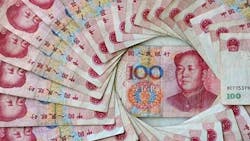How Will China's Labor Turmoil and Rising Wages Impact Reshoring?
Question: With the recent strikes in China and the continuing upward pressure on wages, do you see a number of U.S. companies pulling up stakes and coming back? And how is it for them to bring back resources, etc.? Should manufacturers have an exit plan?
Answer: Chinese wages have been rising by about 15 to 18%/year compounded since about 2000. As a result, the Chinese labor cost/unit of output is now about 3X what it was in 2000. For some products, we estimate about 25%, the manufacturing cost gap vs. the U.S. has gotten small enough that the offshoring “hidden costs” (duty, freight, packaging, carrying cost of inventory, innovation impact of separating engineering from manufacturing, etc.) are now enough to overcome the residual manufacturing cost gap.
We expect the wage trends to continue. The one-child policy has caused the workforce to drop about 3.5 million/year while the real income is rising rapidly. Workers are less willing to work in factories, especially with boring jobs. The resulting employee dissatisfaction drives strikes and also very high turnover rates.
We have identified over 500 U.S. firms that have reshored, about 60% of the work is reshored from China. The two leading factors motivating U.S. companies to reshore manufacturing from China to the U.S. are the rise in Chinese USD wages and quality problems. The quality problems are undoubtedly increased by the high turnover rates.
The transition back can be difficult. Obviously the exit plan is more complex with an owned facility vs. sourcing from a contract manufacturer. Employees sometimes hold management hostage until employees’ demands are met. There can be problems transferring funds out of the country.
Even if there are no employee or governmental issues, any transition has costs and risks. One company I work with was sourcing low volume die castings in China. When they brought some of the dies to U.S. die casters, they were told the tooling was too primitive to be run here. So, every detail should be planned, including back-up sources in case the new U.S. source does not startup as quickly as planned.
Most companies failed to do the math when they offshored. We urge them to do the math when they consider reshoring so that the decision is a long-term good solution for the company.
About the Author

Harry Moser
Founder
Harry Moser, founder of the Reshoring Initiative, grew up experiencing the glory of U.S. manufacturing. With more than 45 years of manufacturing experience (most recently 25 years as president, chairman and then chairman emeritus of GF AgieCharmilles), Moser is a leading industry spokesman for reshoring and for developing the skilled manufacturing workforce required by reshoring.
The not-for-profit Reshoring Initiative ‘s Mission is to bring back U.S., and more generally North American, manufacturing jobs by helping companies see that, increasingly, they will be more profitable if they produce and source in or near their market.
